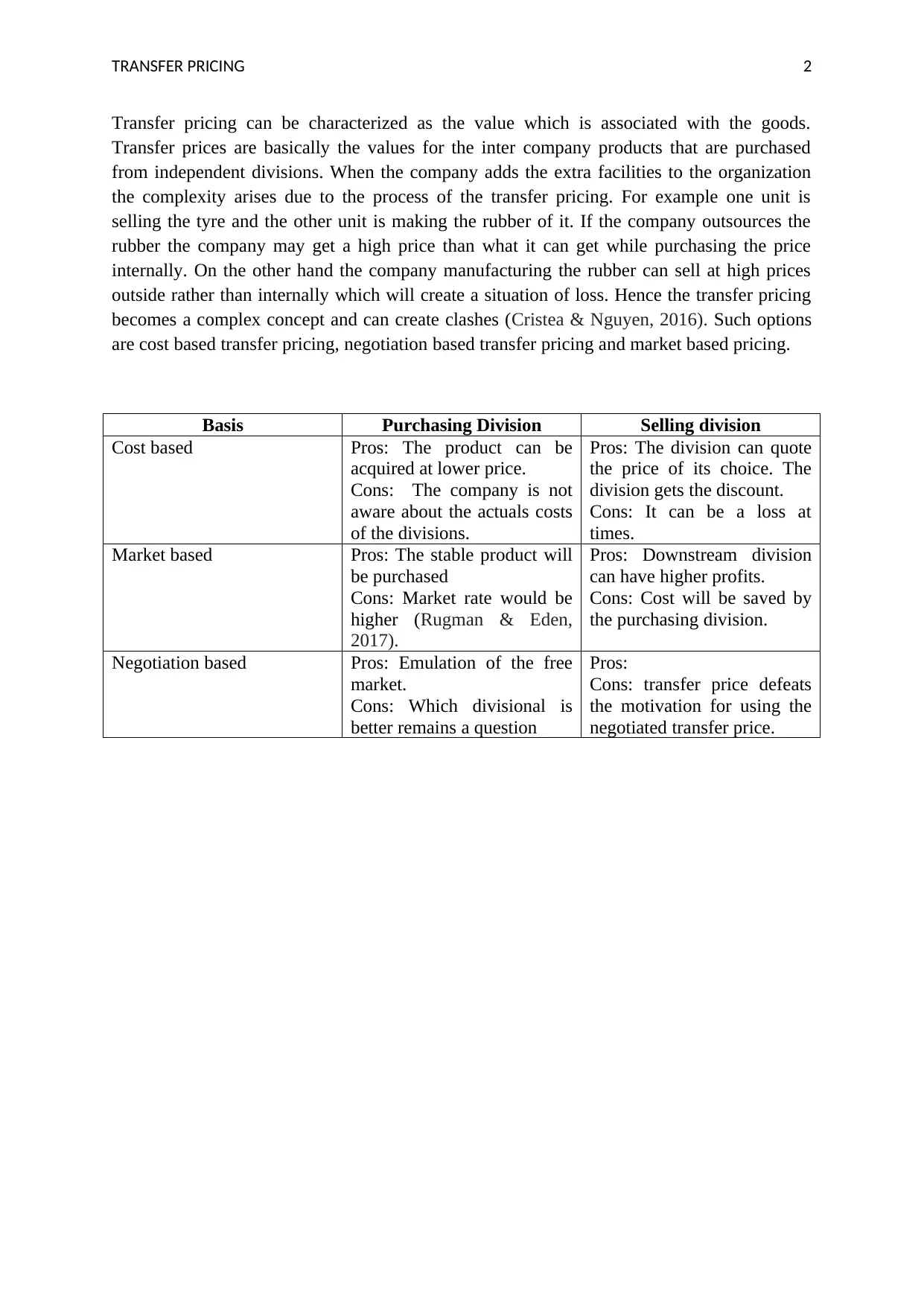Transfer Pricing and its Impact on Company Performance
VerifiedAdded on 2023/04/20
|3
|376
|478
Report
AI Summary
This report examines the concept of transfer pricing, focusing on its application within multinational firms. It highlights the complexities that arise when different divisions within a company engage in inter-company transactions, especially when one division supplies goods or services to another. The report explores three primary transfer pricing methods: cost-based, market-based, and negotiation-based. It analyzes the pros and cons of each method from the perspectives of both the purchasing and selling divisions, considering factors such as pricing, cost control, and potential for profit maximization. References include academic research on transfer pricing by Cristea & Nguyen (2016) and Rugman & Eden (2017), providing a comprehensive overview of the subject matter.
1 out of 3









![[object Object]](/_next/static/media/star-bottom.7253800d.svg)